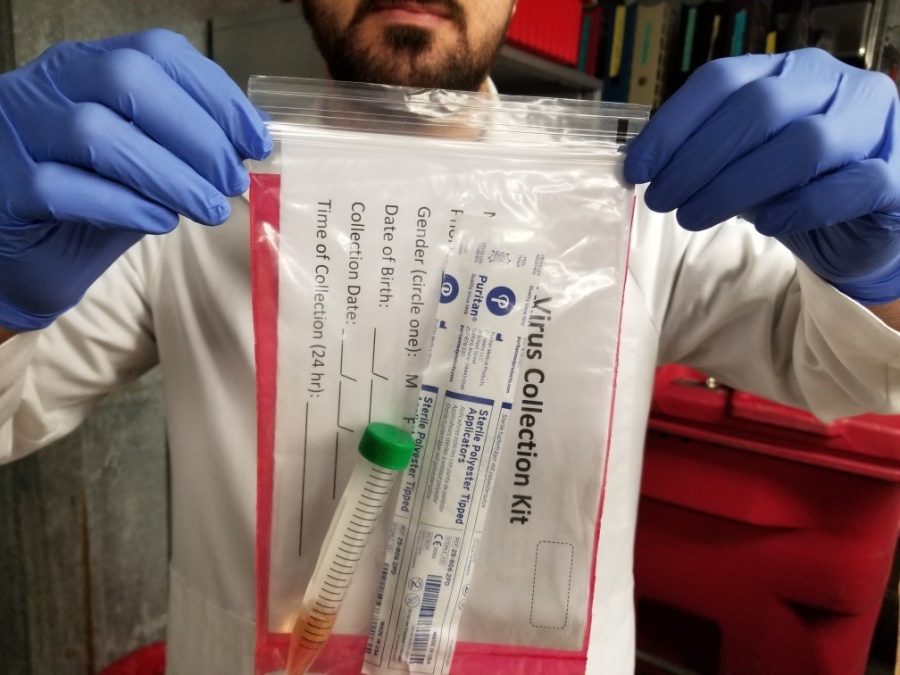There are a number of different ways to test for COVID-19, some of which are able to diagnose an active infection and others that look for the presence of antibodies in an individual’s blood. Let’s break these tests down.
RT-PCR test:
The process for a molecular test also called an RT-PCR test, involves a swab that reaches the back of the throat through the nose. After the test is completed, patients will typically be asked to return back home and self-quarantine until the results come back. Sound fun?
The sample from the swab will undergo a polymerase chain reaction, or PCR, test in a laboratory that is able to look for the genetic material of the SARS-CoV-2 virus: RNA.
The enzyme reverse transcriptase, or RT, is able to convert the RNA from the sample into DNA. The newly formed DNA is amplified using the PCR test, which can form a million copies of the DNA in the matter of just 20 cycles. PCR is a relatively quick and effective way to amplify genetic material in order to get a measurable result.
Typically, a fluorescent dye is added to the sample of (now increased) DNA in order to detect its presence. If the patient has the SARS-CoV-2 virus, then the RNA will be converted to DNA and then amplified, and then the dye will cause fluorescence, which allows the scientists to visualize the results. Voila, the patient tests positive.
On the other hand, if the patient is not infected with the virus, there will be no RNA in the first place, so no DNA can be formed from the reverse transcriptase enzyme. No DNA can be amplified and no fluorescence can be visualized.
RELATED: CDC estimates 40% of people infected with COVID-19 are asymptomatic
Serologic antibody test:
The antibody test is very different than the RT-PCR test. In principle, as the name implies, this test looks for antibodies in the patient’s blood. When a person becomes infected, their immune system produces antibodies as a way of fighting off the infection. Typically, these antibodies last for a while after the infection is gone to help protect the individual from future reinfection.
A serologic antibody test usually involves taking blood from a patient and can be done with the prick of a finger. It definitely sounds a little bit easier than sticking a swab through the nose to get to the back of the throat.
A key difference between the two tests is when they would yield positive results.
An RT-PCR test will give a positive result when the patient is actively infected, as in the virus is currently in their body. Once the virus is eliminated, the patient will not test positive (given no false positives) because the virus is not present anymore.
On the other hand, a serologic antibody test will test positive as long as there are antibodies in the patient’s blood, which can last for months. Antibodies against the influenza virus from the vaccine typically last about 6 months and protection typically declines from decreasing antibody levels or mutations in virus strains. So, as long as the patient has antibodies, a serologic antibody test will give a positive result (given no false negatives).
Antibody tests are game-changers. An individual who displays no symptoms would have no incentive to get their nose and throat swabbed and go through the hassle of getting the RT-PCR test. Interestingly enough, a quick antibody test can let that individual know if they are infected but just asymptomatic, meaning they display no symptoms since they still have antibodies from fighting the infection.
RELATED: What’s in a good coronavirus test, accuracy or speed? It depends…
Antigen test:
The third type of test — the antigen test — looks for, as the name implies, antigens, which are foreign substances that elicit the production of antibodies and, in general, an immune response. Antibodies are able to recognize antigens via their epitopes on their surface. The antigen tests diagnose active infections by detecting traces of the virus, in this case, the SARS-CoV-2 virus.
The FDA touts this new form of testing and says that “[a]ntigen tests are also important in the overall response against COVID-19 as they can generally be produced at a lower cost than PCR tests.”
These tests are typically done via a nasal swab and can produce in 15 minutes. These tests are not as sensitive as RT-PCR tests, meaning that they produce a good number of false negatives, but the results that come out as positive are known to be accurate. In this case, a negative result does not totally rule out infection.
Follow Amit Syal on Twitter









